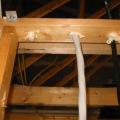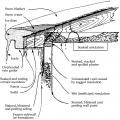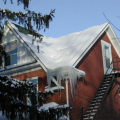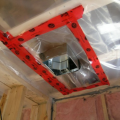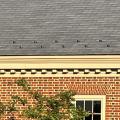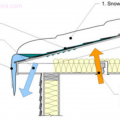Showing results 1 - 12 of 12
All holes through the top plates should be sealed with canned spray foam to prevent conditioned air from leaking into the attic.
Examples of many common ceiling penetrations that will be difficult to insulate and air seal in this cathedral ceiling.
Ice dams form when warmth from the attic causes roof snow to melt and flow to roof eaves where it refreezes at the colder overhang and forms a buildup of ice causing more snowmelt to puddle where it can wick back through shingles and leak into the attic
Ice dams formed by melting of snow on roofs can affect roofs, walls, ceilings, siding, and insulation.
Lack of insulation over the top plate can lead to ice dam formation on a low sloped roof.
The icicles and the bare spot along the left roof ridge indicate that heat from the second-story room may be heating the underside of the roof deck, melting the snow and likely leading to ice dam formation.
The polyethylene ceiling vapor barrier is sealed to form an air barrier around the exhaust fan in this very cold climate location (≥ CZ 6).
The ventilation space in this vented over-roof keeps the roof cool to prevent ice dams over the unvented attic
These snow guards help to keep snow from sliding off the roof and injuring people below.
This home has heat loss through the roof, leading to ice dam formation and structural issues during winter months.
Warm air that leaks into the attic through unsealed light fixtures or other bypasses can melt snow on the roof leading to ice dam formation.
